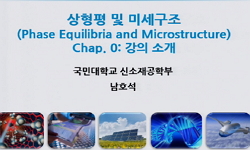Weathering can reduce rock strength and eventually affect the structural stability of a rock mass, which is important in the field of engineering geology. Several methods have been developed lo evaluate the degree of weathering, including the chemical...
http://chineseinput.net/에서 pinyin(병음)방식으로 중국어를 변환할 수 있습니다.
변환된 중국어를 복사하여 사용하시면 됩니다.
- 中文 을 입력하시려면 zhongwen을 입력하시고 space를누르시면됩니다.
- 北京 을 입력하시려면 beijing을 입력하시고 space를 누르시면 됩니다.


화학적 풍화에 의한 결정질 암석내의 미세조직 발달특징과 암반공학적 의미 = Characterization of Microtextures formed by Chemical Weathering in Crystalline Rocks and Implications for Rock Mechanics
한글로보기https://www.riss.kr/link?id=A99649719
- 저자
- 발행기관
- 학술지명
- 권호사항
-
발행연도
2011
-
작성언어
-
-
주제어
풍화작용 ; 전자현미경 ; BET ; 미소촛점 X선 CT ; 미세조직 ; 미세공극 ; weathering process ; SEM ; BET ; X-ray CT ; microtexture ; micropore
-
KDC
500
-
등재정보
KCI등재,SCOPUS
-
자료형태
학술저널
- 발행기관 URL
-
수록면
381-391(11쪽)
- DOI식별코드
- 제공처
-
0
상세조회 -
0
다운로드
부가정보
다국어 초록 (Multilingual Abstract)
Weathering can reduce rock strength and eventually affect the structural stability of a rock mass, which is important in the field of engineering geology. Several methods have been developed lo evaluate the degree of weathering, including the chemical weathering index. In this study, we analyzed the weathering degree and characteristics of microtextures and pores in crystalline tucks (gneiss and granites) based on petrographic observations, the chemical weathering index, mineralogy by XRD, microtextural analysis by SEM/EDS, measurements of pore size and surface area by the BET method, and microporosity by X-ray CT. The formation of secondary minerals and micrutexture in gneiss and granitic rocks are assumed to be affected by complex processes such as dissolution, precipitation, and fracturing. Hence, it is clear that some chemical weathering indices that are based solely on whole-rock chemistry (e.g., C1A and CWI) are unable to provide reliable assessments of the degree of weathering. Great care is needed to evaluate the degree of chemical weathering, including an understanding of the mineralogy and microtexture of the rock mass, as well as the characteristics of micropores.
동일학술지(권/호) 다른 논문
-
피에조 콘 시험과 실내시험을 이용한 점토지반의 투수특성 연구
- 대한지질공학회
- 구남실 ( Nam Sil Gu )
- 2011
- KCI등재,SCOPUS
-
선형회귀분석을 적용한 강원도 지역 화강암의 일축압축강도 산정
- 대한지질공학회
- 이문세 ( Moon Se Lee )
- 2011
- KCI등재,SCOPUS
-
공기-브러쉬와 폭약 세척 방법에 의한 암반관정의 세척 효과 검증
- 대한지질공학회
- 이정환 ( Jeong Hwan Lee )
- 2011
- KCI등재,SCOPUS
-
- 대한지질공학회
- 황재홍 ( Jae Hong Hwang )
- 2011
- KCI등재,SCOPUS




 ScienceON
ScienceON KISS
KISS




